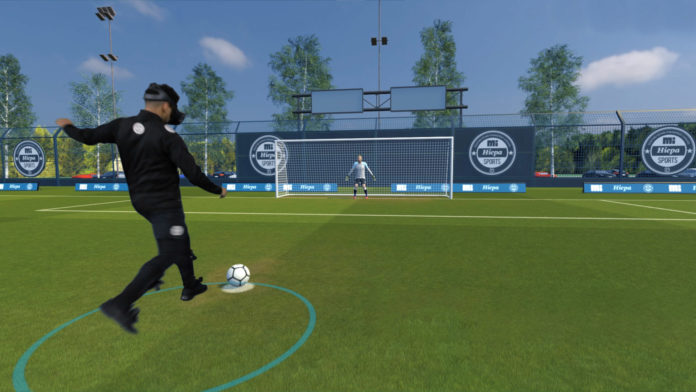First generation Vive Trackers with SteamVR Tracking 1.0 sensors were just released to the public in November 2017 and are expected to see a huge upgrade with the 2.0 version. Road to VR reports that the next-gen 2.0 sensors will be placed inside the currently unreleased Vive Pro headset, base stations, and the newest version of the Vive Trackers.
Some Backstory
During CES 2018, we reported that the Vive Pro would work with both 1.0 and 2.0 base stations and that up to four 2.0 base stations could be used at a time. This upgrade in tracking sensors will widen up room scale to over 32 feet x 32 feet of space, might have backward compatibility with older controllers or might get new ones, and will increase the distance of object, tool, and body tracking. Upload VR reports that the new lighthouse base stations are more compact and efficient than the previous version.
First Gen Tracker Uses

First generation Vive Trackers have been screwed onto everyday objects like a pinata or a tennis racket, transforming them into virtual tools that you can use to turn up the level of immersion in VR games. Active VR gamers and fit individuals would attach the trackers to Rebuff Reality TrackStraps and then to their wrists, feet, shoes and tools for full body and object tracking.
The Rebuff Reality wrist cuff is like the one you would attach yourself to at a weights station to prevent slipping or to hold onto for more grip, except these cuffs prevent the trackers from flying off mid-punch, kick, swing, or during a special dance move! Vive even created a Racket Sports Set that their users could purchase for improved immersion in games like Racket NX and a Hyper Blaster Set for games like Arizona Sunshine.
Second Gen Tracker Fitness Potential
The newest race to see who’s got the top tracking system in VR is upon us with this new development of SteamVR Tracking 2.0 sensors. The sensors are currently being used by Mi Hiepa Sports, a VR football or soccer (for us Americans) coaching, rehab, and training simulation system.
Athletes that trained in the system using the 2.0 trackers had full leg tracking when they strapped four of them to their shoes and around their shins.This gave coaches and trainers more insight into kicking and passing mechanics, leading to gameplay improvements. The trackers are interesting in that they can be attached to as many things as you can afford to attach them to, making them a versatile fitness and training tool.

The extended tracking distance of the base stations, Pro headset, and now tracking pucks will very likely improve how VR owners use their bodies as a controller when they dance, play, and fight in VR. Extended full body tracking can even mean that developers and studios can improve gameplay and create more immersive games and experiences where you can walk around more freely or gamify fitness in a whole new way.
Although spec details are limited, the next round of trackers will likely do what the older trackers have achieved and then some. The extended room scale tracking of the Vive headset and base station sensors combined with the Vive Tracker 2.0 sensors is going to improve gameplay, training, esports and athletics. Who knows, maybe we’ll see new ideas and applications emerge from this new batch of Vive products.
Price
There is no set price for the new trackers, Vive Pro, base stations or controllers. The first generation trackers are currently priced at $99 and the older Vive system as a whole is $599.
Follow Them Here
Website: Vive
Facebook: HTC Vive
Instagram: htcvive
YouTube: HTC VIVE


